1988 Cizeta-Moroder V16T
Power of 16. Exotic Italian supercars don’t come much more extreme than the late Claudio Zampolli’s ‘excess all areas’ V16T with its 16-cylinder engine. We uncover its secrets. Story by Chris Rees. Images by Patrick Enzen/RM Sotheby’s.
CIZETA MORODER V16T story in full
Extraordinary 16-cylinder supercar: full story
Sixteen is hardly a common engine cylinder count. Recently, really only Bugatti has pursued the 16-cylinder format, but decades before, a little-known Italian outfit called Cizeta had blazed a trail with its very own ‘sixteen’. Yet despite the aura of complexity that such an engine conjures up, the Cizeta V16T was in fact designed to be practical and easy to live with.
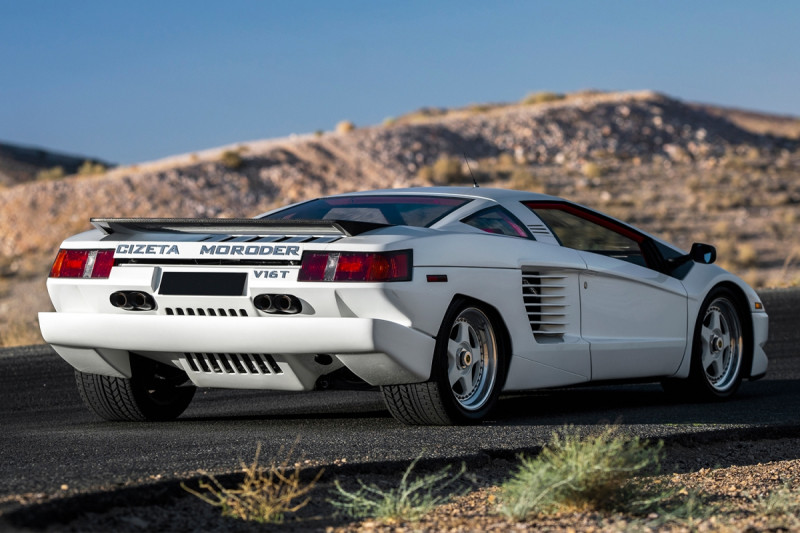
That’s just one of the peculiarities of this extraordinary story. The stellar list of dramatis personae behind it includes ex-Lamborghini staff, the designer of the Countach and the producer of Donna Summer’s disco hit Love to Love You Baby. The Cizeta V16T was the singular brainchild of Claudio Zampolli. His nickname was selvadegh, which means tenacious or stubborn in the dialect of Emilia-Romagna, reflecting his character. Sadly this mercurial engineering talent died in 2021 at the age of 82, making now a fitting moment to celebrate his proud creation. Born in Modena, Zampolli joined Lamborghini as a test and development driver in 1966, spending eight years at the heart of the development team behind projects such as the Miura and Countach. In 1974, he emigrated to the US to help develop Lamborghini’s Stateside prospects but within two years he’d left to set up his own outfit selling and servicing Italian supercars.
DrivesToday magazine interviewed Zampolli back in 1998, when he recalled: “This was quite an education in the real world. At Lamborghini, my job had been to develop and test. Here, I had to listen to customers complain about reliability, and mechanics complain about how difficult the cars were to work on.”
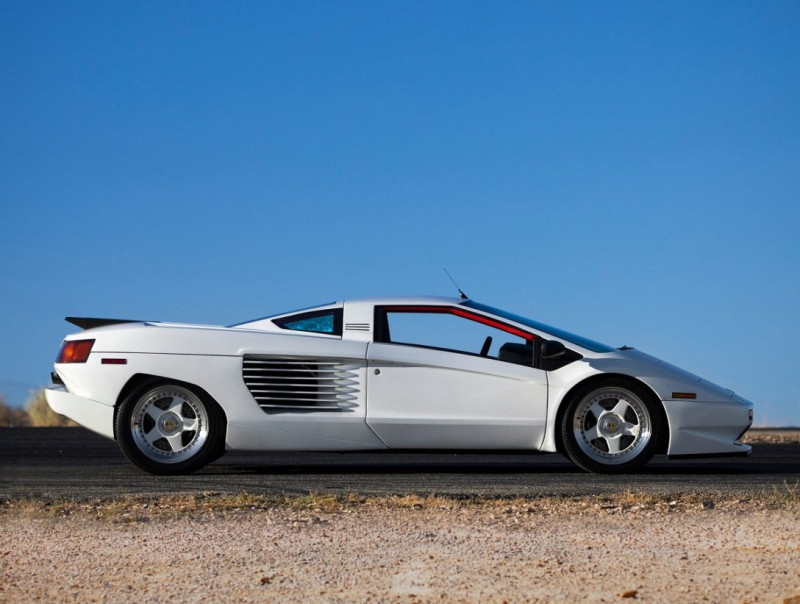
This was the impetus that piqued Zampolli to create his very own supercar. This was the mid-1980s, when supercars were in the ascendant. Also riding a wave – a musical new wave – was composer and producer Giorgio Moroder, whose Lamborghini Countach Zampolli took care of at his Los Angeles workshop. The two teamed up to found Cizeta Moroder Motors – Cizeta being how you pronounce the initials ‘CZ’ in Italian – chee-zetta.
With backing in place, in 1985 Zampolli approached Marcello Gandini, the legendary designer behind multiple Lamborghinis. Perhaps it should come as no surprise that the eventual Cizeta Moroder so closely resembled the Lamborghini Diablo: he worked on both projects in parallel and presented proposals to Lamborghini and Zampolli within two months of each other in early 1986. Gandini’s initial design for Zampolli was rejected but his second attempt, delivered in May 1986, was accepted.
One thing that certainly made the Cizeta stand out was its enormous size: fully 4400mm long and 2050mm wide, the latter dictated by the transverse engine layout (more on that later). Gandini’s shape was low and sweepingly sculptural, with large side air intakes for twin radiators, big spoilers and Gandini’s trademark angular rear wheelarches, while the plunging glasshouse shape very much echoed the Diablo’s.
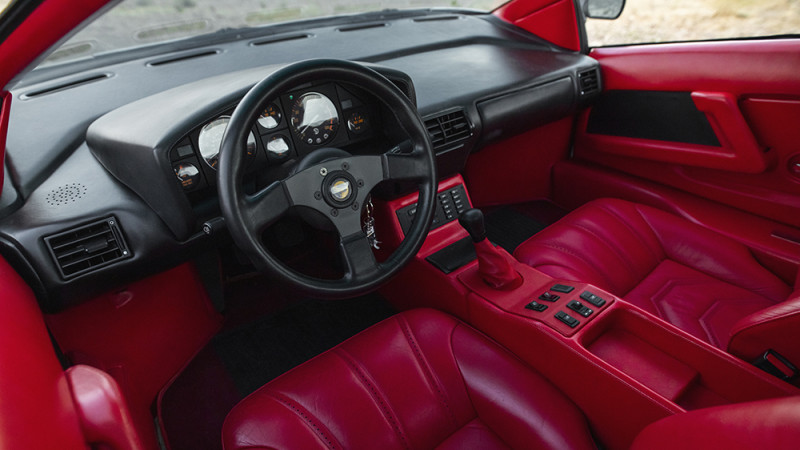
The car was developed in strict secrecy: not even Zampolli’s family knew what he was doing in premises in his home town of Modena. He hired a lot of ex-Lamborghini staff, including chief engineer and head of engine development Oliviero Pedrazzi; chassis men Achille Beveni and Lanose Bronzatti; and master fabricator Giancarlo Guerra. A visible show of pride in Zampolli’s Modenese origins came in the Cizeta logo, which used Modena’s colours, blue and yellow (the same colours also appeared on the engine cam covers), while the triple wolf head motif referenced Romulus and Remus, the twins of Roman myth who were suckled by a wolf.
The chassis was a tubular spaceframe with suspension by unequal-length arms all round. Up front these connected to Koni coil spring/damper arms plus an adjustable anti-roll bar. At the rear, two sets of spring/dampers were mounted inboard of the rear wheels. The brakes were Brembo drilled and ventilated discs with two-piston callipers. The two-piece, five-spoken OZ wheels used a single central nut and wore Pirelli P Zero tyres (245/40 ZR17 front and 335/35 ZR17 rear).
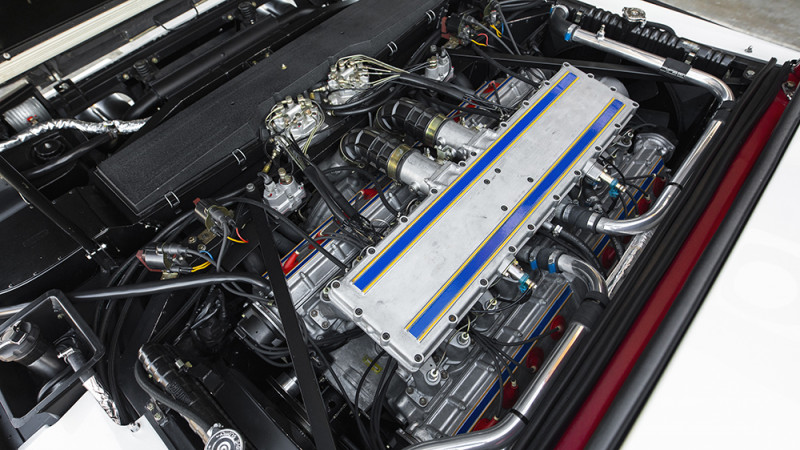
Machining was contracted out to a local workshop that made components for F1 engines, as Zampolli said: “There are lots of small workshops around here that will make you half a dozen of something rather than 1000. These are people well versed in F1 and exotic sports cars.” Cizeta itself assembled the chassis, suspension, sheet metal, engine components and upholstery at its Modena works.
Zampolli’s philosophy was to keep things simple, so he didn’t bother with adjustable suspension, four-wheel drive, turbocharging or anti-lock brakes. But he took a very bold step with the centrepiece of his car: the 16- cylinder engine. Why did Zampolli choose this format? In our 1998 interview, he told us: “As a small and exclusive car maker, I had to be different. 16 cylinders is very exotic, and the engine is strong and torquey. It is also very docile. You can drive around town in fourth gear. It is like driving an auto.”
The engine has sometimes been described as two V8s joined together, but it used a unique cylinder block: a single aluminium alloy casting with twin steel crankshafts running through its centre feeding power to a ZF five-speed gearbox. The ‘T’ in the V16T designation referred to the engine’s transverse mounting in the chassis; it was inclined by 10 degrees to keep the centre of gravity low and mate it cleanly to the transaxle.
The internal architecture was uncannily like the Lamborghini Urraco V8, sharing an identical bore and stroke (86mm x 64.5mm). There were four cylinder heads, each with a twin-overhead camshaft, four distributors, 64 valves and 16 spark plugs. Early cars used two Bosch K-Jetronic fuel injection systems but later Cizetas switched to a bespoke set-up made by ex-Weber-Marelli people. The total capacity was 5995cc, had an 8500rpm rev limit and the quoted power output was 520hp at a heady 8000rpm – more than contemporaries like the Countach (492hp) and Ferrari F40 (478hp) – rising as high as 560hp in production spec. Cizeta claimed a top speed of 204mph.
The public first saw the car at a glamorous event in Los Angeles on 5 December 1988, hosted by Jay Leno. Moroder even composed an original song for the event: A Car is Born. The white car pictured on these pages is chassis number 001, the prototype as seen at the 1989 Los Angeles and Geneva Shows. Zampolli said of it: “I tested the white prototype on Italian roads, in Death Valley and in California, about 70,000km without any problem. That's why I gave customers a five-year/ 50,000-mile warranty.” This is the only example badged as a Cizeta-Moroder, as the partnership with the music producer dissolved fairly quickly and the Moroder tag was dropped for the production version that debuted at the March 1991 Geneva Show with a new name: Cizeta V16T.
The 1991 Geneva car was right-hand drive – one of three ordered by Prince Jefri of Brunei. Cizeta’s plan was to make 12 cars per year but despite Zampolli taking 14 orders at the Geneva Show, he had delivered only 11 by 1994, citing engine supply difficulties. A further three cars remained unfinished, and it was in theory possible to order a car from Zampolli after that point, priced at around $1 million. A one-off yellow roadster even made an appearance at the 2003 Concorso Italiano in Monterey.
There are subtle differences between the prototype on these pages and production V16Ts, including larger side air intakes with more strakes, a diagonal crease in the lower bodywork, different lights and different mirrors. The red leather interior of chassis 001 also has a unique dashboard, centre tunnel, steering wheel, door panels and seats. In 2018, the car was fully restored mechanically by Bruce Canepa of Scotts Valley, California, with extra heat shielding added around the fuel tanks. It’s a fully functional and roadworthy machine.
A singular and singularly brave project, the Cizeta is among the rarest Italian supercars ever made. The white Cizeta Moroder featured here goes under the hammer at RM Sotheby’s Arizona sale on 27 January 2022 with an estimate of $900,000 to $1,200,000. We’ll make sure to report back on the result.
Many thanks to Elisabetta Masini and Cristina Guizzardi of Via Modena, and to Gabriele Candrini, for their kind help with this feature.
DRIVING THE CIZETA
DrivesToday drove a rare UK-registered right-hand drive Cizeta back in 2000, but its 16-cylinder engine had been replaced by a Ferrari 5.0-litre flat-12, a job apparently effected after the fact by Pininfarina. We said: “Open the door to get in and entry/egress is clearly simple for anyone of any size. Not only does the huge door open conventionally and allow you to get in without the contortions required by some other cars of this type, but it also takes with it part of the sill so that when getting out you can put your feet on the ground and stand up instead of having to climb over a wide section of chassis first.
Next, shut the door and take stock of what Claudio Zampolli thought you would need to see in front of you. It’s that simplicity thing again. You think they’ve forgotten some of the equipment as there is only a speedometer and rev counter, but Claudio reckoned supercar owners never looked at supplementary gauges, so why fit them? So the cockpit is neat, well designed and minimalist.
“The ride is good, making proper use of the Cizeta’s almost Group C-like suspension.
The power transmission to the road is beautifully smooth and forward progress is simplicity itself. The car is quite capable of swallowing any over-exuberance with forgiving compliance. Claudio's simplicity thing extended to a lack of ABS and traction control and my only real criticism is that the ZF power steering, whilst having plenty of feel, has too slow a rack.”
As for the 16-cylinder-engined version, Car & Driver magazine had a go in the prototype in 1989, reporting: “It's strange how a V16 sounds noticeably different from a V12… a kind of double-V8 woofle. The engine springs to life immediately and with surprising docility. It isn't shattering or unruly, but it does have a 6.0-litre bass voice. And it growls menacingly when prodded… We give the throttle a brief nudge, and the sheer power of the V16 snaps our head back. This will not be a car that needs ‘rowing’ on the gearbox. The snarl – even at no more than 4500 of the available 8500rpm – is awesome… At less than 1000rpm, the V16T pulls away. Not just willingly, but without the slightest demonstration of effort. And on a whiff of throttle. It is hugely torquey.”
“The ride on almost Group C-like suspension is good. The power transmission to the road is beautifully smooth”
TECHNICAL SPECIFICATIONS Cizeta Moroder V16T
- ENGINE: 5995cc V16
- BORE X STROKE: 86mm x 64.5mm
- COMPRESSION RATIO: 9.3:1
- MAX POWER: 560hp at 8000rpm
- MAX TORQUE: 540Nm (399lb ft) at 6000rpm
- TRANSMISSION: 5-speed manual, rear-wheel drive
- SUSPENSION: MacPherson struts, wishbones, coilover dampers and anti-roll bars front / rear
- TYRES: 245/40 ZR17 (F), 335/35 ZR17 ®
- DIMENSIONS: 4440mm (L), 2050mm (W), 1115mm (H)
- WEIGHT: 1700kg
- MAX SPEED: 204mph
- 0-62MPH: 4.5sec
ITALY’S V16 PIONEERS
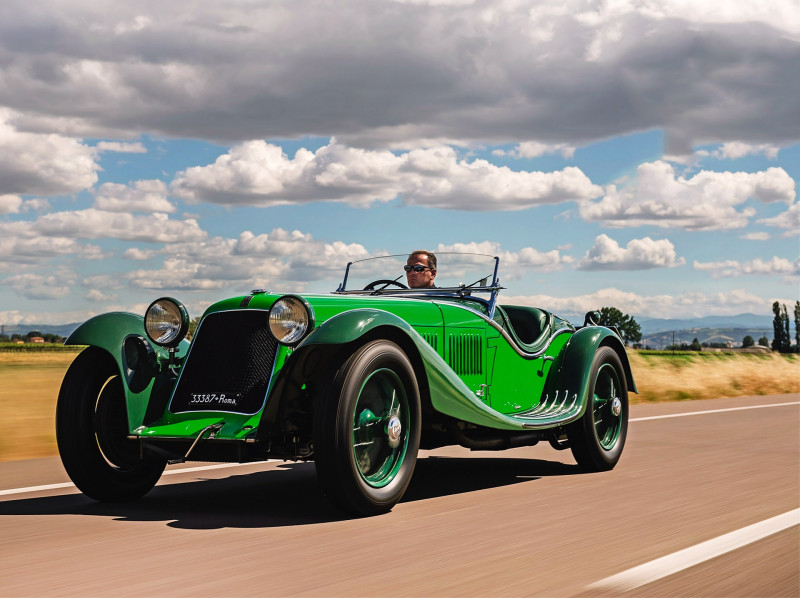
In 1929, one year before Cadillac launched the world’s first V16-engined production car, Maserati got in first with its Tipo V4 racer, which used an experimental V16 created from two Alfa Romeo 26B units mounted on a single crankcase and a very narrow 25-degree vee. With two superchargers, the 3961cc engine produced 305hp, enough to set a world speed record of 152.8mph.
However it was too heavy for much success on the track. Of the two V4s built, one was rebodied by Zagato in 1930 as a spectacular road car, while the other was transformed into the V5 racer in 1932 with extra displacement (4906cc) and power (360hp) but was destroyed at Montlhéry with the tragic loss of Amadeo Ruggeri’s life. In 1938, just as Auto Union was shying away from the V16 engine format, Alfa Romeo leapt into the arena with the Tipo 316.
Its new V16 engine was designed by Gioacchino Colombo, who essentially joined two straight-eights into a 60-degree ‘vee’. With 2958cc and twin superchargers, it developed 440hp. Only three Tipo 316s were built, with second place in the 1938 Italian Grand Prix its best result. A successor was built – the 162 of 1939 – with a much wider 135-degree vee, four superchargers and 495hp.
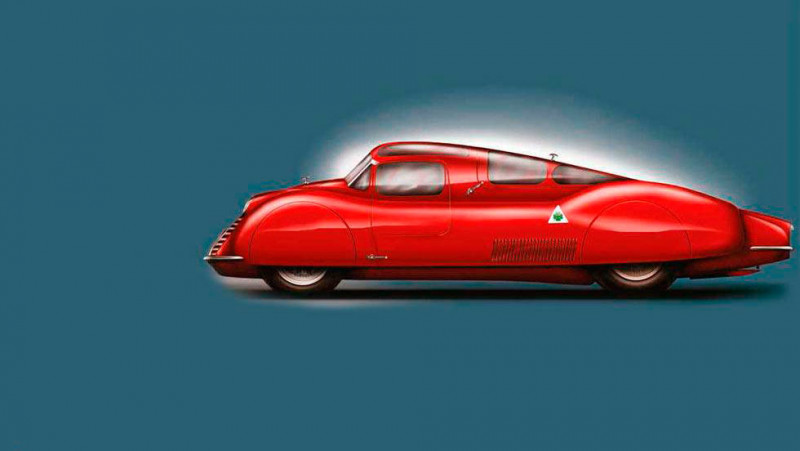
The outbreak of war meant that only one prototype was ever completed, while its intended successor, the Tipo 163, was never be built – this was to have been a racing berlinetta using a mid-mounted 190hp unsupercharged version of Alfa’s 2995cc V16 powerplant.
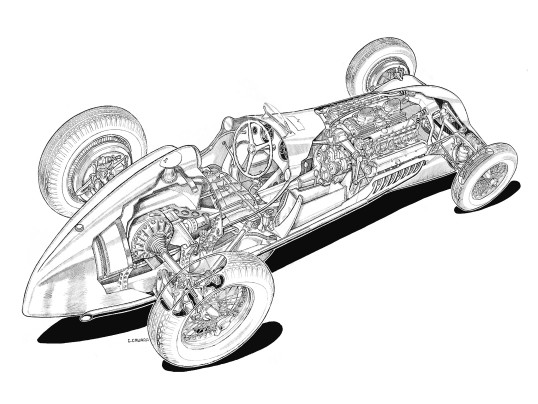
CLOCKWISE FROM TOP: Maserati V4, Alfa Romeo Tipo 316, stillborn Alfa Tipo 163 (rendering by David Rodríguez Sánchez)


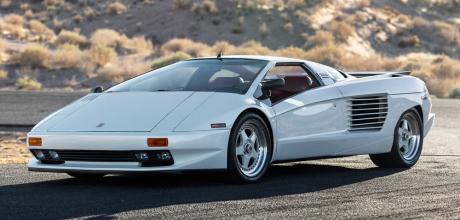
CIZETA MUSINGS
The Auto Italia radar, I'm sure, detected that Antonio Mandelli has announced the revival of the Cizeta name, with what is tantamount to a new car, but still centred on that unique V16 engine. In the definitive book on the Cizeta cars by Brian Wiklem it is explained that, rather as Dauer bought Bugatti EB110 stock, Mr Mandelli did the same with Cizeta Automobili some time ago, to develop his own modified version, formerly known as the Mandelli Monza.
This Auto Italia reader noticed the repeat of one fact that was refuted by Mr Wiklem, that it was Giorgio Moroder's investment which turned Claudio Zampolli into an independent manufacturer. In fact the author alleges activity had been underway a year already, for Sylvester Stallone was the wealthy friend originally enthused by the talented Zampolli to back his enterprise. The famous actor was a customer of his, very into Lamborghini supercars at the time, evinced by the Jalpa in 1985's Rocky IV. It seems he moved on from Cizeta when the Mimrans asked him about becoming involved in Lamborghini affairs instead. Consequently, the V16 engine already existed and was secretly being road tested by Mr Zampolli in a cut-and-shut Ferrari 308 GTB by the time Giorgio Moroder came on board. He said himself that it was the sight of the engine that convinced him the endeavour was serious and had prospects. I still support the theory that the car was conceived by Zampolli in the early 1980s as an offering to Lamborghini's new owners, the Mimran brothers, to put into production alongside the Countach as a companion model, derived from it, but oriented at the US market. One can see why, when he was later turned down and Claudio decided to create and sell the car himself, he would not want people to see it as a Lamborghini reject. A car to be the next Lamborghini would explain why the Cizeta Moroder was to have a chassis of rectangular (cuboid) tubes instead of cylindrical tubes, a curious choice for a hand-built car. Roundsection tubes can be lighter for the same strength, so they were and still are preferred in motor racing and would be expected for a handmade prestige supercar of the highest quality and price, as the Cizeta eventually became. Round tubes were difficult to machine-weld at the time, so a series production supercar typically used squaresection tubes. The famous motor mogul Bob Lutz, at Chrysler under Lee Lacocca during the Lamborghini era, said that he asked Tom Gale and William Dayton of their Design Center to restyle the Diablo in 1987 precisely because it looked too much like the Cizeta Moroder and not enough like the Countach. It took a year to arrive at a compromise all could agree on — Gandini redid the nose, Chrysler redid the rear. Telling, though, that the altered Diablo still bore Gandini's name on the flank, whereas the purer Cizeta Moroder never did. Well, that's the theory I believe, anyway. Would that Claudio were still here to set the record straight for himself, although Auto Italia did interview him, so we have that. It is a sad fact that many of the people who knew the truth of the greatest era for the cars we like, the 1950s-1980s, are passing beyond the veil now, leaving a lot of vacuum that will fill with whatever prejudice people are happy to believe. I still read, if never in Auto Italia, assertions like Ferruccio Lamborghini storming off to make the Miura after a fight with Enzo Ferrari when in reality they never even met, or that the Lancia Beta and Fiat 128 are merely synonyms for rust bucket, not that they advanced front-wheel drive car design by at least 10 years. Bravo to those who keep trying, but please, heroes, do tell your stories. And tell them here!